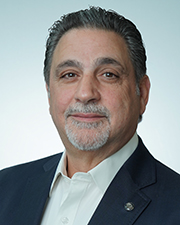5 best practices for improving safety culture in your workplace - by Dylan Amore

I have been the safety supervisor at Ipswich Bay Glass since 2017 and am responsible for all safety-related policies, procedures and equipment at the company. Over the years, I created and fine-tuned the company’s comprehensive safety program, developed hundreds of job specific plans with hazard identification, risk assessment and OSHA control measures and conducted daily safety audits on job sites. Here are my five best practices for improving safety culture in your workplace:
Practice Good Housekeeping
It is often said that a clean job site is a safe job site. Although there is more involved in creating a safe workplace, good housekeeping goes a long way. When materials are not stored properly, or a job has debris all over walking and working surfaces, it creates a hazardous environment. A cluttered job site can cause frustration and increases the possibility of someone taking a shortcut that could cause an accident or injury.
One of the most efficient ways to ensure a clean job site is to review work areas weeks prior to a job start and getting the workers and general contractor involved to ensure the area is clean and clear for upcoming operations to flow smoothly. When this step is skipped, there can be a last-second scramble to move materials or trash which costs time and money for all parties and increases risk. Train your workers in safe material storage and proper storage of general trash and unused materials from the start.
Develop a Job Hazard Analysis
A Job Hazard Analysis (JHA) breaks down a job-specific task step by step and lists ways to mitigate potential hazards. Not only do JHAs help employees understand what is expected and how to complete their work safely, they also help highlight hazards that might be overlooked. By reviewing a JHA with the work crew prior to the job start, you can get everyone on the same page and create a feeling of one team.
Develop and Enforce Clear PPE Policies
Personal Protective Equipment (PPE) is the last step in the safety hierarchy of controls but is very crucial. Unfortunately, every hazard cannot be eliminated or engineered out. After all, construction sites are constantly evolving and doing so rather quickly. Creating policies, including hand protection and eye protection, is important for capturing the small hazards that are often overlooked.
From my experience, creating a glove policy that requires workers to wear cut-resistant gloves at all times in the shop and on the job has shown to decrease the number of hand injuries. Now you may wonder why is it important for someone to wear gloves if they’re not dealing with anything sharp? If workers are dealing with sharp materials and objects, they don’t hesitate to put on their gloves. Common hand injuries occur from not having adequate hand protection or from other materials in the general work area.
Put Boots on the Ground
In my opinion, this is one of the most important ways to improve a company’s safety culture. Being on the jobsite and being involved shows that the company is truly committed to safety. You can have a perfect JHA on paper, but you can’t cover all the bases unless you get safety program participation and feedback from the workers completing the tasks. Furthermore, having a respected relationship with your employees is vital for them to take you seriously when you discuss how and why it is crucial to work safely. Talking to your employees about what is working and what is not working goes a long way.
At Ipswich Bay Glass, we recently gathered our shop employees to discuss hand protection. We received input that our current gloves were too bulky. We quickly brought in a glove supplier and ordered gloves with the same cut rating that had better dexterity for handling smaller parts and screws. This instantly increased employee compliance and willingness to wear the PPE without slowing production. Keeping boots on the ground proves your dedication to keeping the workplace comfortable and safe.
Enhance Toolbox Talks with Lessons Learned
Toolbox Talks are a great way to share basic safety tips and requirements on tools, equipment and general construction tasks with employees. Include detailed examples of how previous injuries or near misses occurred so they know what things to look out for and how to avoid finding themselves in similar situations. By sharing real-life examples, you create an eye-opening and more relatable learning experience for your employees while quickly relaying important information that they can use on future job sites.
Dylan Amore, CSP is the safety supervisor and certified safety professional at Ipswich Bay Glass, Rowley, Mass.
Mount Vernon Co. acquires John Carver Inn & Spa in Plymouth, MA

Selecting the right façade installation firm - by Steven Powell

IREM President’s Message: Fostering community connections during the holiday season


.png)






.png)

